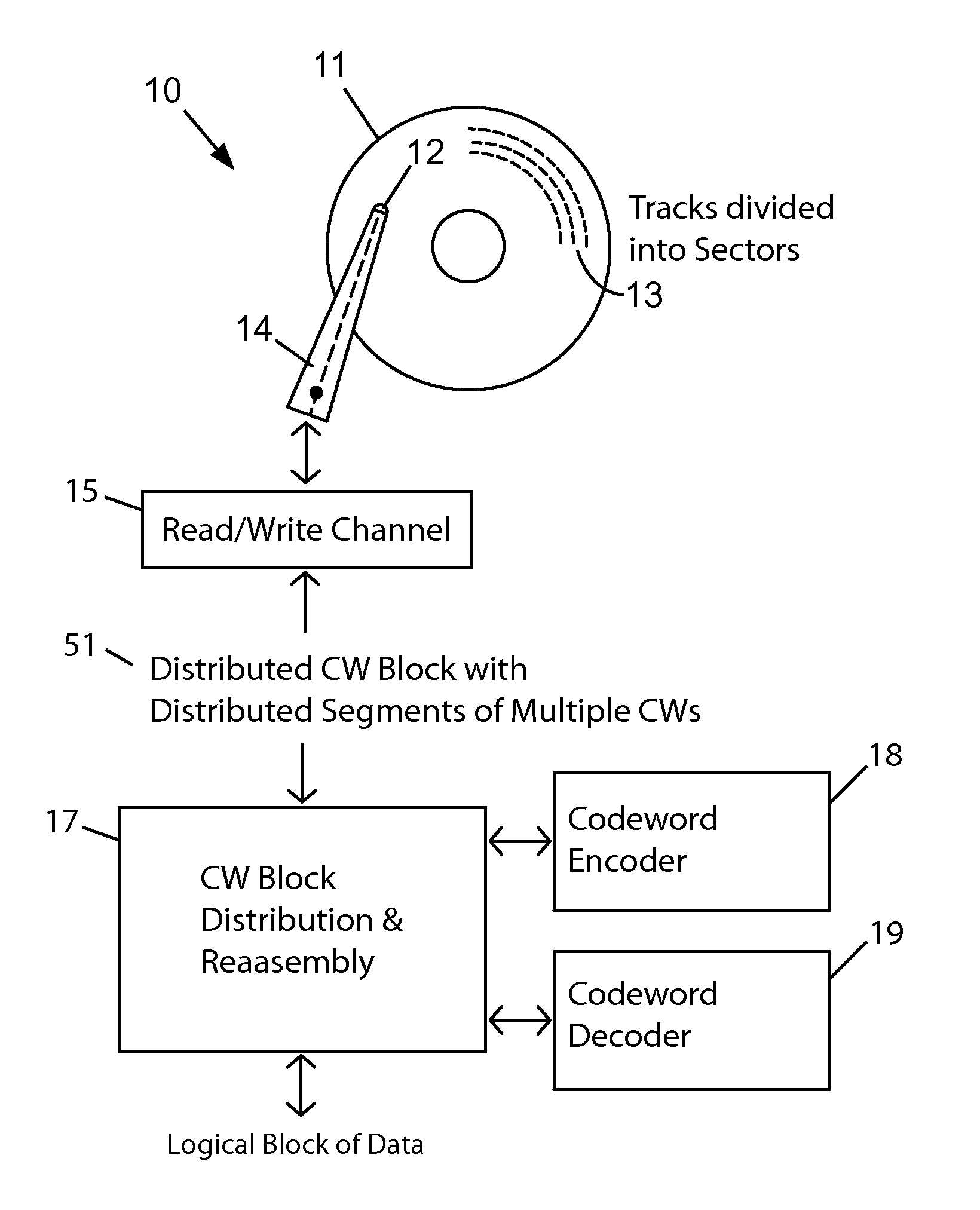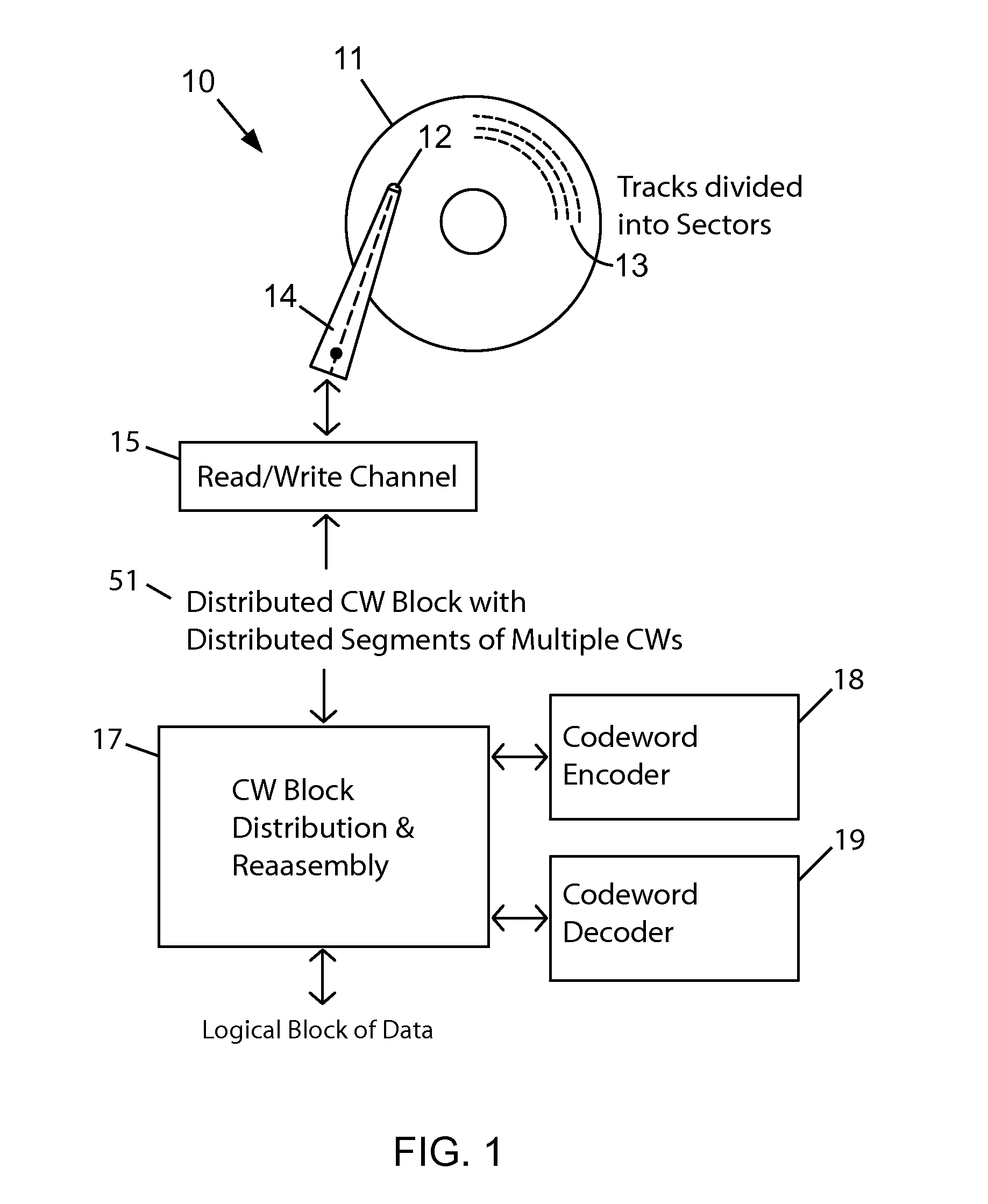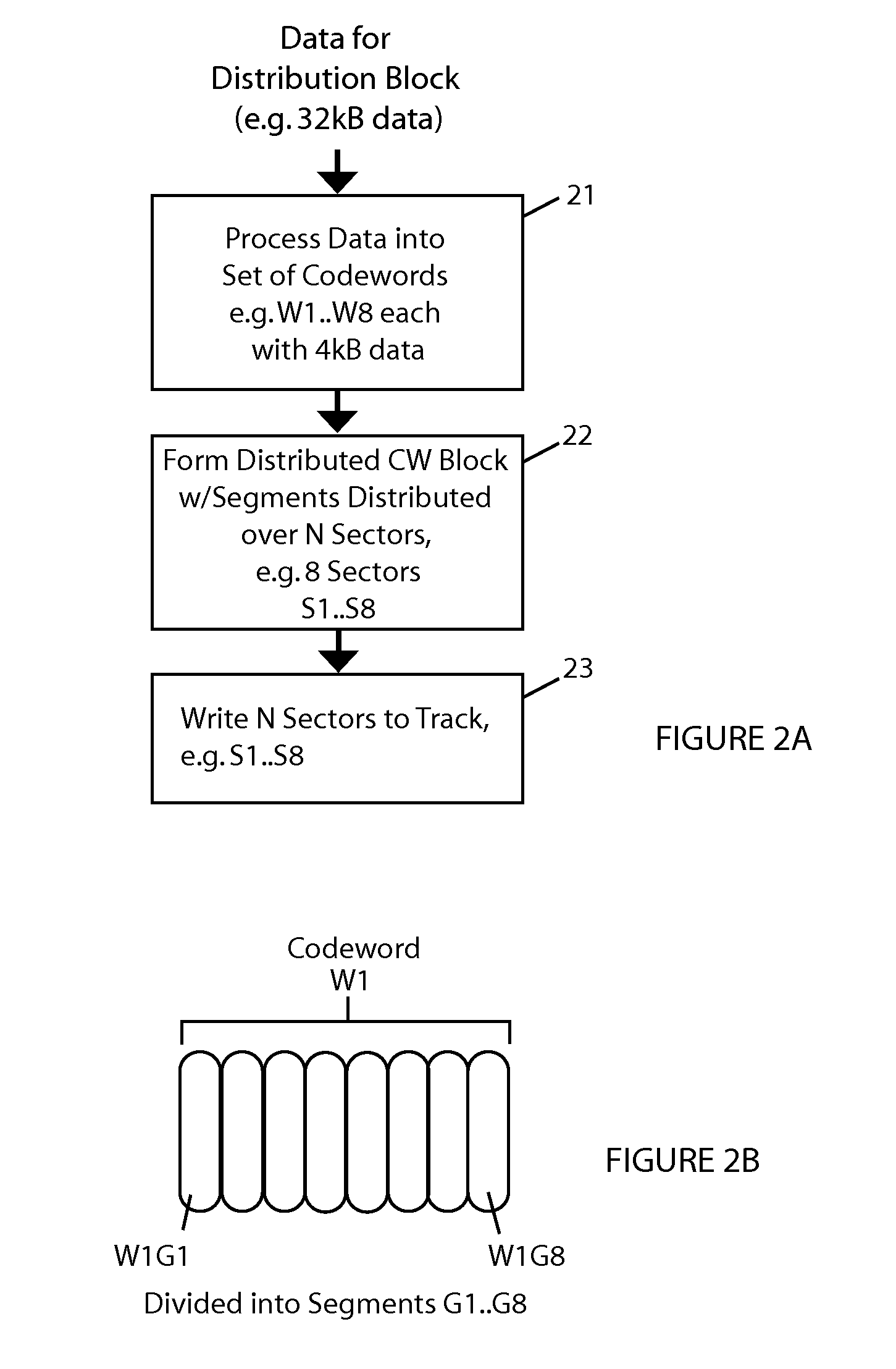Disk drive with distributed codeword blocks
a technology of codeword blocks and disk drives, applied in the direction of coding, digital signal error detection/correction, recording signal processing, etc., can solve the problems of snr variation between tracks and variation in effective width, so as to reduce the effect of snr squeeze on track, efficient distribution, and improved snr performan
- Summary
- Abstract
- Description
- Claims
- Application Information
AI Technical Summary
Benefits of technology
Problems solved by technology
Method used
Image
Examples
Embodiment Construction
[0024]The embodiments described herein assume that the disk drive uses shingled magnetic recording (SMR). Some brief points about SMR disk drives will be noted. Shingled magnetic recording (SMR) allows large blocks such as are used for a distribution block in embodiments to be written without performance penalty. In contrast perpendicular magnetic recording (PMR) would require a read-modify-write sequence to achieve 32 kB or 64 kB block size with 4 kB emulation, which would result in a high performance penalty. Conventional disk drives with magnetic media organize data in concentric tracks that are spaced equally apart. Shingled writing is a way of increasing the areal density of magnetic recording. In SMR drives a region (band) of adjacent tracks are sequentially written with each track overlapping the previously written track. The shingled tracks in a region must be written in sequence unlike conventionally separated tracks, which can be written in any order. Once written in shing...
PUM
| Property | Measurement | Unit |
|---|---|---|
| size | aaaaa | aaaaa |
| density | aaaaa | aaaaa |
| length | aaaaa | aaaaa |
Abstract
Description
Claims
Application Information
 Login to View More
Login to View More - R&D
- Intellectual Property
- Life Sciences
- Materials
- Tech Scout
- Unparalleled Data Quality
- Higher Quality Content
- 60% Fewer Hallucinations
Browse by: Latest US Patents, China's latest patents, Technical Efficacy Thesaurus, Application Domain, Technology Topic, Popular Technical Reports.
© 2025 PatSnap. All rights reserved.Legal|Privacy policy|Modern Slavery Act Transparency Statement|Sitemap|About US| Contact US: help@patsnap.com



